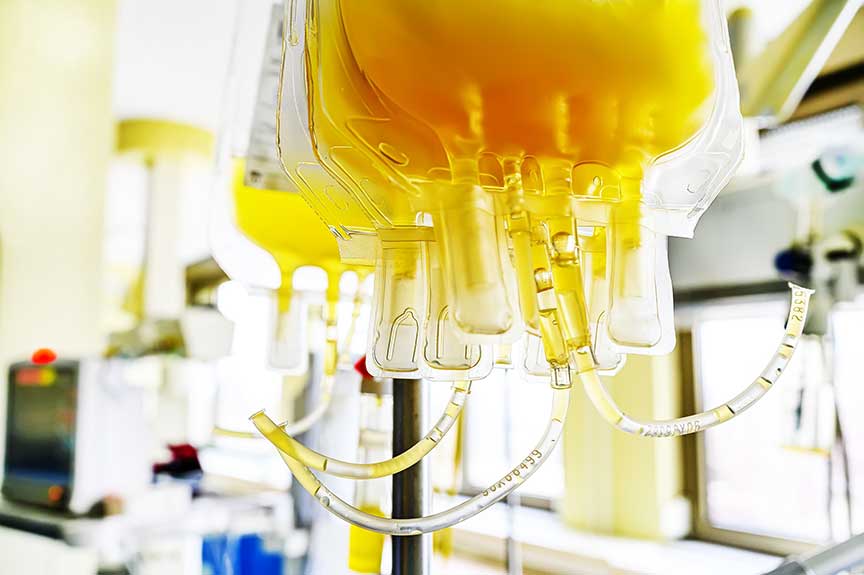As use of investigational convalescent plasma for the treatment of COVID-19 becomes more prominent, laboratory leaders should get familiar with compliance risks
The US Food and Drug Administration (FDA) announced Aug. 23, 2020, the issue of an emergency use authorization (EUA) for the use of investigational convalescent plasma for the treatment of COVID-19 in hospitalized patients. According to a statement by the FDA, “The EUA authorizes the distribution of COVID-19 convalescent plasma in the US and its administration by health care providers, as appropriate, to treat suspected or laboratory-confirmed COVID-19 in hospitalized patients with COVID-19.”
Controversy followed the issuance of this EUA, as multiple top health officials publicly expressed concerns about data from research conducted by the Mayo Clinic. Francis S. Collins, MD, PhD, Director of the National Institutes of Health; Anthony S. Fauci, MD, a well-recognized infectious disease expert; and H. Clifford Lane, MD, expressed their concerns publicly in interviews published in a New York Times article. In follow-up, the National Institutes of Health (NIH) issued a statement Sept. 1.
While these concerns were recognized, the FDA decided that the benefits outweigh any uncertainties, stating the decision to issue the EUA “follows the FDA’s extensive review of the science and data generated over the past several months stemming from efforts to facilitate emergency access to convalescent plasma for patients as clinical trials to definitively demonstrate safety and efficacy remain ongoing.”
With the FDA’s announcement, HHS Secretary Alex Azar said the product is the culmination of months of work, clinical trials, and evaluation by the FDA, BARDA [Biomedical Advanced Research and Development Authority], and private partners.
“Our work on convalescent plasma has delivered broader access to the product than is available in any other country and reached more than 70,000 American patients so far,” said Azar. “We are deeply grateful to Americans who have already donated and encourage individuals who have recovered from COVID-19 to consider donating convalescent plasma.”
COVID-19 Convalescent Plasma Clinical Trials to Continue

“We’re encouraged by the early promising data that we’ve seen about convalescent plasma. The data from studies conducted this year shows that plasma from patients who’ve recovered from COVID-19 has the potential to help treat those who are suffering from the effects of getting this terrible virus,” said FDA Commissioner Stephen M. Hahn, MD. “At the same time, we will continue to work with researchers to continue randomized clinical trials to study the safety and effectiveness of convalescent plasma in treating patients infected with the novel coronavirus.”
The FDA added details in industry guidance issued Sept. 2 for investigational COVID-19 convalescent plasma.
Testing Donated Plasma: Overlooked Requirement for Clinical Laboratories
While the EUA for the use of investigational convalescent plasma for the treatment of COVID-19 in hospitalized patients represents an advance in clinical technologies that are available to treat COVID-19, there are some meaningful implications for clinical laboratories. An initially overlooked requirement in the EUA will impact the way that clinical laboratories can test donated plasma.
The EUA for the use of convalescent plasma to treat COVID-19 requires the use of one specific antibody test, stating, “Units tested by the Ortho VITROS SARS-CoV-2 IgG test and found to have a signal-to-cutoff (S/C) value of 12 or greater qualify as high titer COVID-19 convalescent plasma.”
To clear up any ambiguity, the EUA further clarifies that other testing options are not permitted under the initial EUA, stating, “If a blood establishment is considering using an alternative test in manufacturing in order to qualify high titer COVID-19 convalescent plasma, they should contact the FDA Center for Biologics Evaluation and Research (CBER) to determine acceptability of the proposed test, which if accepted, would require an amendment to this EUA.”
Convalescent plasma use with COVID-19 will likely continue. Clinical laboratory managers interested in identifying individuals for plasma donation and testing units that have been donated should be aware of this requirement to ensure that they are compliant with the terms of this EUA.

—By Caleb Williams, Editor, COVID-19 STAT
Related Resources:
NYT: F.D.A.’s Emergency Approval of Blood Plasma Is Now on Hold






